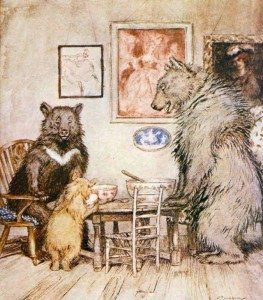by Matthew Stafford
Fairy tales, or their forebears, have been around for nearly as long as people have been talking to each other. For millennia, you could hear them spoken all over the world, shared around the evening fire or a beaker of brew, passed down from generation to generation, each storyteller altering the plot, characters and mood to fit his or her fancy. Even in its pre-written, spoken-word form, the fairy tale influenced literature around the world: Aesop’s Fables, The Arabian Nights: Tales from a Thousand and One Nights, the fantastical prose of Liezi and Zhuangzi, the Panchantantra of ancient India, the Gesta Romanorum of medieval Europe, Apuleius’ Metamorphoses and Chaucer’s Canterbury Tales. (Idries Shah’s 1979 collection World Tales: The Extraordinary Coincidence of Stories Told in All Times, in All Places identifies 65 folktales that reappear in several cultures.)
“Once upon a time” begins the classic fairy tale, referring to that nearly forgotten age of magic and wonder “when wishing,” goes the old saying, “was still effective.” Fairy tales don’t necessarily have fairies in them, but elves, trolls, witches, gnomes, mermaids and other such creatures are usually involved. (Homo sapiens, like princesses and evil stepmothers, are welcome, too.) Unlike myths, legends, fables and other folktales, fairy tales are also quickly paced and to the point, like a good short story; The Wizard of Oz, The Hobbit and the Harry Potter novels may be fantastic, but they aren’t fairy tales.
Fairy tales weren’t actually written down until the Renaissance Era, when Italian poets Giovanni Francesco Straparola and Giambattista Basile collected, reworked and published several dozen of them in two seminal works. By the reign of Louis XIV, fairy tales were all the rage among the fashionable ladies who frequented Paris’ literary salons; one of them, Marie-Catherine Le Jumel de Barneville, Baroness d’Aulnoy, coined the term “fairy tales” (contes de fées). Another courtier, Charles Perrault, published his own collection, Tales of Mother Goose, in 1697.

The popularity of the fairy tale diminished during the Age of Enlightenment and the Industrial Age, but the Brothers Grimm’s 1812 collection Children’s and Household Tales helped the genre regain its popularity, especially after the naughty bits were replaced with stern lessons in morality. Their success at preserving the style and substance of old German folktales encouraged 19th century folklorists in Russia, Norway, Japan, Romania and Ireland to do the same with their own native stories. (Joseph Jacobs’ 1890 collection of English folktales included Jack and the Beanstalk, The Three Little Pigs and Goldilocks and the Three Bears.) Denmark’s Hans Christian Andersen, meanwhile, came up with several beloved brand-new folktales all his own.
The wry, postmodern fairy tales of the past century have kept the tradition thriving, and range from James Thurber’s The Unicorn in the Garden and e.e. cummings’ The Elephant and the Butterfly, to Jon Scieszka’s The Stinky Cheese Man and William Goldman’s The Princess Bride. The older tales are re-emerging as well, oftentimes in retooled versions that (to crib from Freud, Fromm and Bettelheim) express today’s subconscious impulses, fears and desires in a positive way. Some things never change.








